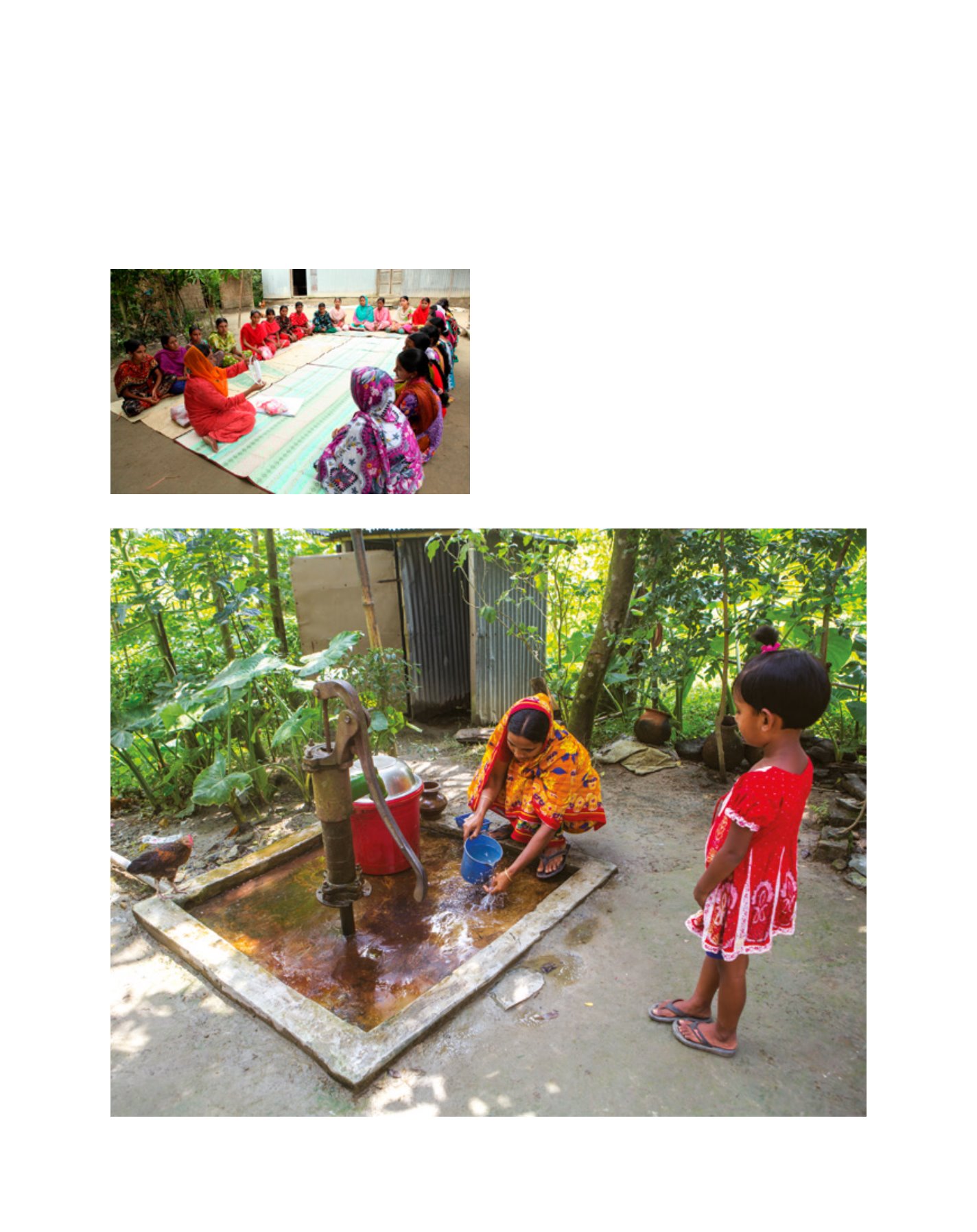

[
] 53
A B
et ter
W
or ld
and outcome data, such as changes in the behaviour of the
individuals or households; how well and when latrines are
used; whether all household members are using it; how well
VWCs continue to perform; and to what extent women are
integrated in planning and management. Considering that
need, the Qualitative Information System (QIS) was intro-
duced to the programme in 2012, developed jointly by BRAC
WASH and its long time knowledge partner, IRC.
This method quantifies qualitative process and outcome
indicators, such as participation and inclusiveness (process)
and behavioural changes (outcomes), with the help of
progressive scales (ladders). Each step on the ladder has a
short description, called a mini-scenario, which describes
the situation for a particular score. An example of monitor-
ing with these progressive ladders is shown in the diagram,
demonstrating how BRAC had been ahead of its time both in
service delivery and outcome monitoring.
From 2016, due to the changing pattern of funding and
higher demand for services, BRAC WASH has been scaling
up efforts in developing a social enterprise model for provid-
ing WASH services to rural (hard to reach) areas as well as
to municipalities.
Currently, BRAC is making an effort to address water, sani-
tation and hygiene as cross-cutting issues across all fields
of development. Since January 2017, BRAC has launched a
new project where the WASH programme works towards
integrating basic water, sanitation and hygiene services into
its various other developing programmes including health,
education, microfinance, and targeting the ultra poor. This
is a step towards the long-term sustainability of services and
addressing WASH as an issue for everyone.
Good hand washing practice has become a household routine under the WASH programme
Education session on menstrual hygiene management for adolescent girls
Image: BRAC WASH
Image: BRAC WASH
















